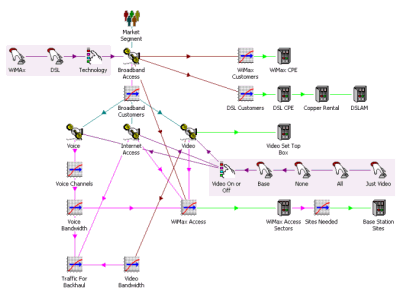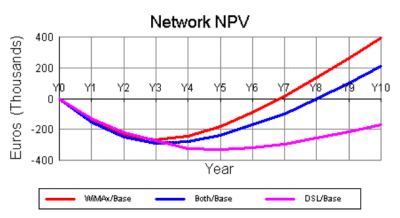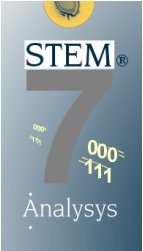Every year since 1996, Analysys has invited existing and prospective users of the
STEM visual software for the reliable modelling of business to a user-group conference in Cambridge,
UK. This year, 22–23 September 2004, the event had a markedly different feel. A
range of guest speakers shared the platform with Analysys, resulting in a more varied
and balanced exchange of views and great insight into industry business-modelling
practice for the audience of operators, equipment manufacturers and other consultants.
|
Operators
|
Consultants
|
Vendors
|
Broadband Wales
Cable and Wireless
Mobitel d.d.
T-Mobile International
Telkom SA
Turkcell
|
CEFRIEL
DOK Systeme
IBSe
Mason
RedSoft
|
Alcatel
Ericsson
Huawei Technologies
Juniper Networks
Marconi
Motorola
Siemens
|
Please register to download
the presentation material from the event and the external material for
which we have permission to distribute.
Workshop exploring the case for WiMAX vs DSL in rural areas
The first session of each day of the event was devoted to an interactive modelling
exercise, as much a group learning exercise on techniques of model development as
a showcase of the agility and flexibility of the STEM tool. On day one, competing
topics such as fixed-mobile convergence, VoIP in the core network, and fibre vs.
digital terrestrial broadcast were discarded in favour of a comparison of the economics
of WiMAX and DSL for the provision of voice, Internet and video services in rural
areas.
This first session focused on the development of a high-level specification (six
slides in PowerPoint) for a model, including a discussion of the desired results
and the scenarios to be evaluated, including the basic WiMAX/DSL comparison and
then the impact of possibly limited reach with DSL.

STEM model layout for WiMAX-DSL technology comparison, as created at the STEM User Group Meeting
On the second day, two Analysys consultants led the rapid development of a STEM
model. The vendors present were able to provide some quick estimates of component
costs, and the operators provided contrasting perspectives on likely penetration
rates. Within an hour, a basic modelling framework was established which generated
revenue, capex and opex results which could be readily compared across the various
scenarios defined.

STEM results for WiMAX-DSL technology comparison,
as created at the STEM User Group Meeting
Vendor perspectives on business modelling
Commercial sensitivities discouraged any guest presentations from operators. In
contrast, five of the vendors and two external consultants were keen to discuss
some of the general techniques and objectives they adopted in business modelling
– often in the context of pre-sales support to operators – as a way to stimulate
dialogue and learn from their peers, as well as to impress the other delegates.
Several vendors presented on their own approaches to customer business cases and
the use of tools to demonstrate business value to carriers, as well as technology-specific
models including FTTH, NGN, Gigabit Ethernet and WLAN.
Topics such as consistency and credibility of results were prominent, with particular
interest focusing on the presentation of business models over an intranet or the
Internet as enabled by the new eSTEM technology.
STEM 7.0 launch
 The User Group also saw the launch of STEM version 7.0, with intrinsic support for
voice and data services, a range of new financial calculations, and allocated Service
results broken down by individual Resources. New formatting options in both the
Editor and Result programs deliver extra clarity in the presentation of model structure
and results.
The User Group also saw the launch of STEM version 7.0, with intrinsic support for
voice and data services, a range of new financial calculations, and allocated Service
results broken down by individual Resources. New formatting options in both the
Editor and Result programs deliver extra clarity in the presentation of model structure
and results.
This keynote product launch was followed by a demonstration of the new fSTEM Web-based
service for academics, and a round-table discussion of next-stage development priorities,
aiming to strike a balance between the parallel objectives of making STEM easier
to learn and more forgiving to the novice while delivering more sophisticated analysis
and managing the development of ever more complex and comprehensive network models.